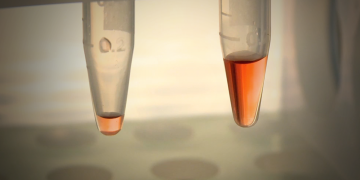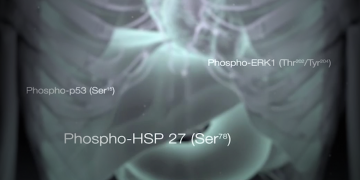
Mini-PROTEAN® TGX™ Gels — Customer Testimonials
Scientists from UCSD, UCD, The Salk Institute, and the University of Alabama talk about the speed, performance, and quality of electrophoresis runs using the Mini-PROTEAN TGX gels in their labs.

Bio-Plex® System Bench to Bedside
Watch how the Bio-Plex® suspension array system has contributed to research findings in Dr Francis Spinale and Dr Steven Kornblau’s laboratories that have the potential to impact screening and treatment of disease.

Gel Doc™ EZ Imaging System Customer Testimonial
Harvard Medical School Postdoctoral student Sririam Kosuri explains how the Gel Doc EZ system has changed the way researchers image gels in the George Church lab at Harvard Medical School’s Wyss Institute.

Gel Doc™ EZ Testimonial — UCSD
Assistant Project Scientist Dr. Dorota Krawczyk, PhD, at the Geoff Rosenfeld Laboratory at the University of California, San Diego, describes how easy it is to use the Gel Doc EZ system.

Identifying Cardiac Defect–Related Protein Signatures
Identifying Cardiac Defect–Related Protein SignaturesAugust 15, 2011
“The first opportunity I had to lay my hand on a human heart I knew that was that — I knew that I wanted to know how the heart works, but more importantly, how it doesn’t work,” says Dr Francis Spinale, describing his inspiration to both research and treat cardiac disease. Using the Bio-Plex® suspension array system, researchers in his laboratory are discovering protein signatures that have the potential to inform decision strategies in cardiac patient treatment.

Chemokines and Cytokines as Potential Markers for Personalizing Leukemia Treatment
Dr. Steven Kornblau has been on faculty at MD Anderson Cancer Center in Houston, Texas, for 20 years, where he divides his time between research into further understanding leukemia disease states, and a clinical practice where he treats a small number of patients with the disease. Recently, his laboratory used the Bio-Plex® suspension array system to discover how cytokine and chemokine profiles alone can be prognostic for patients with the disease, and therefore have to potential to assist development of personalized treatments.

Unlocking the Potential of Stem Cell Research Using the EpiQ™ Chromatin Analysis Kit
Bedtime stories in Dr David Schaffer’s — one of today’s pioneers in stem cell research — childhood home were often not standard fairy tales. With both parents in careers as biomedical researchers (his mother in drug development and clinical trials for a major pharmaceutical company and his father, in cardiovascular research and a pharmacology professor) much of the conversation as far back as Schaffer can remember centered on biology and science.
